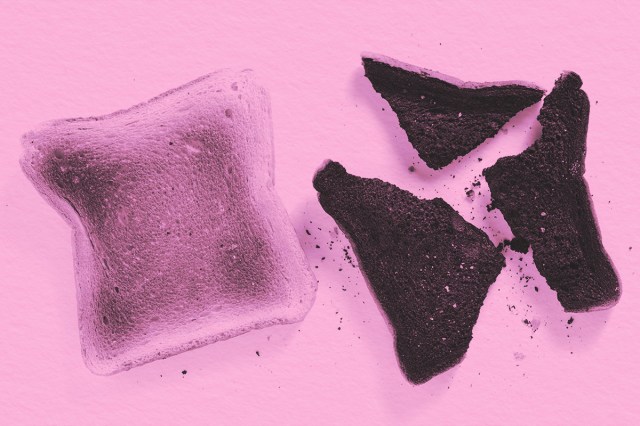
While “burnt” and “burned” aren’t exactly homophones (words that sound the same, but have different meanings, spellings, or both), choosing the correct version can still trip people up. Both words are considered acceptable forms of the word “burn,” making them somewhat interchangeable in most English-speaking countries. But for American English speakers, there’s a distinction, depending on whether the term is being used as an adjective or a verb.
Long before “burnt” or “burned” were in play, the Old English word brent was an adjective used to describe items scorched by fire. In the late 16th and early 17th centuries, “burnt” and “burned” became the preferred spellings. This parallel evolution makes it hard to discern between these terms, and non-American English speakers still use them interchangeably as adjectives (with a preference leaning toward “burnt”). But in the U.S., we usually use “burnt” when describing something’s appearance, as in the popular Crayola color burnt sienna. While both are technically acceptable, it’s less likely you’ll see an American write “burned sienna” or “burned toast.”
But the opposite holds true if the context calls for a past-tense verb. American English speakers are far more likely to use “burned” in an example such as “the chicken burned in the oven” or “I burned in the sun yesterday.” You can say “the chicken burnt” and still be grammatically correct, but it’s less common in the United States.
If you live in England, Australia, or any other non-U.S. country where English is predominantly spoken, it may be hard to find a difference between “burnt” and “burned.” But in the U.S., use “burnt” as an adjective and “burned” as a past-tense verb to avoid issues or confusion.

















